Turbulence (2014)
Sonification-based sound installation. 42-channel sound; paper and thread; 15-channel sensors. Sound composition: Hanns Holger Rutz. Visual composition: Ana Sabolić, Laura Nefeli Chromecek, Liberta Mišan (mentor: Nayarí Castillo). Interaction design: Richard Dank. A project of IEM, IZK and IAM Graz. Embedded into the SysSon research project and ADRIART project. Exhibition: Forum Stadtpark, Graz, Austria, November 2014.
A floating topography of paper, threads, light and sound pervades the space. A composition of audible climate data is connected to sensors that generate impulses to modulate the sound, capturing physical displacements and providing tangible contact for the visitors. Each of the suspended sensors is associated with a particular sound layer, and setting them in motion produces invisible waves that travel across the space, facilitating the appearance and disappearance of these layers. Locations in the space have to be discovered by finding path ways in the dense field of paper leaves. The construction from which the leaves, sensors and speakers are suspended is an interpretation of the icosahedral Fuller world map.
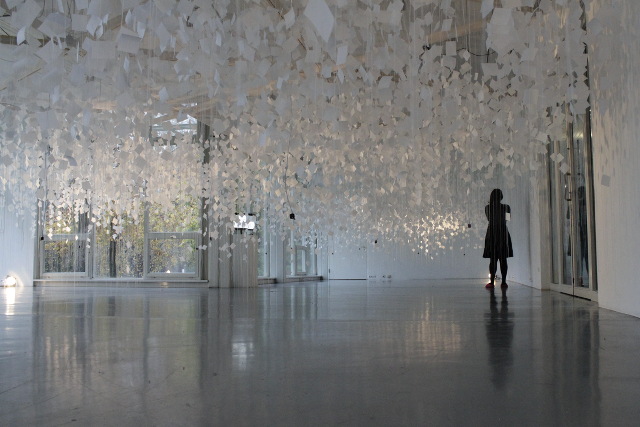
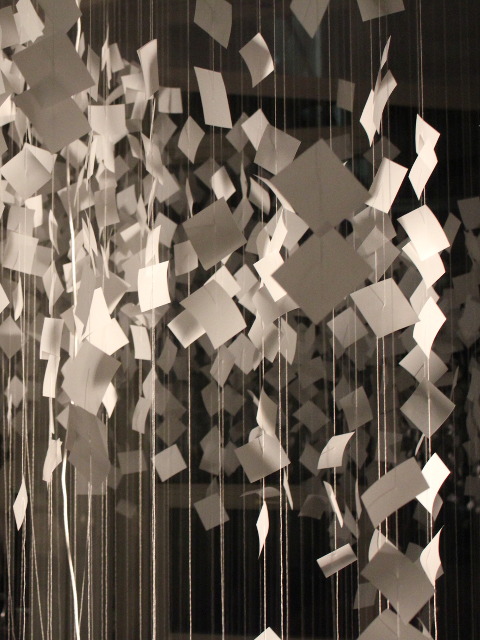
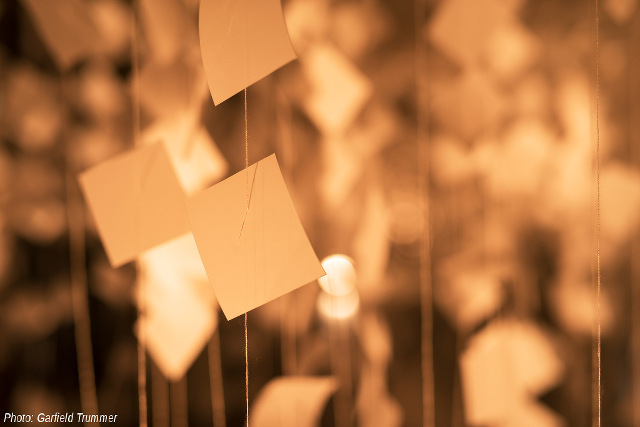
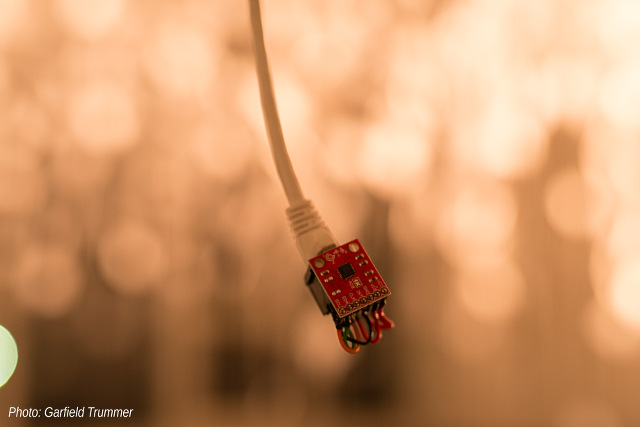
Sonification
The promise of sonification is to provide a sound-based methodology as an alternative to visualisations that traditionally dominate all disciplines of science. By taking on the notion of an auditory display, it must first and foremost be confronted with all epistemological rigour that a critical mind should hold when it comes to “representation”, positivism, truth and correspondence theories. On the other hand, sonification as a technique has also been appropriated by various sound artists. In the case of “Turbulence”, a work that is based on historical and future (projected) climate data, the intriguing question was how one can arrive at a successful aesthetical object while maintaining a liability to the “scientificity” when handling and processing the data.
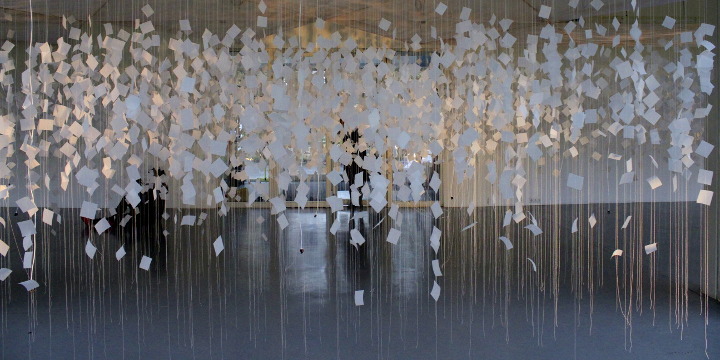
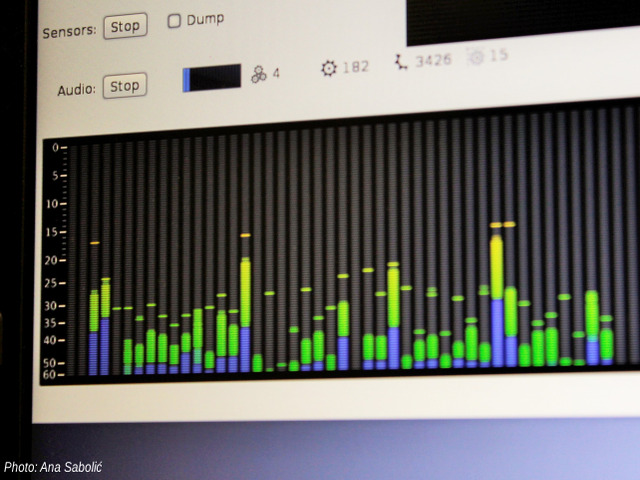
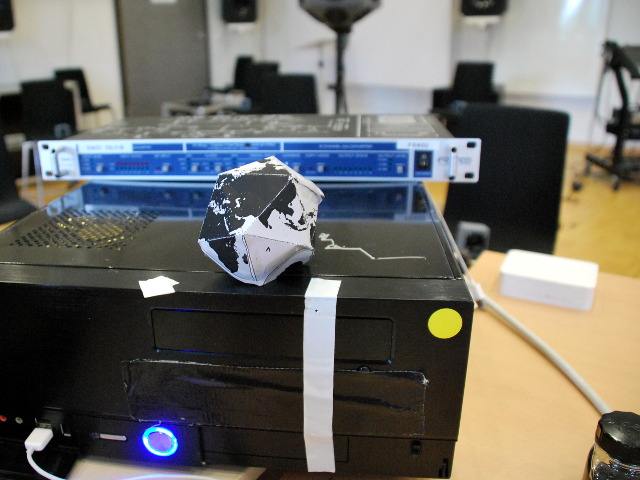
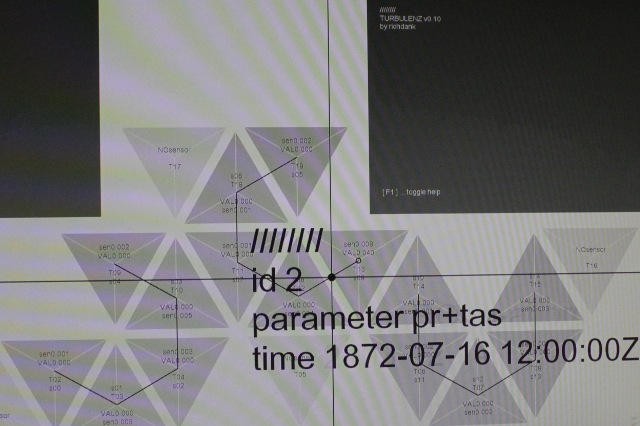
Turbulence (room rec. compilation)
Nobody can have a phenomenological grasp on “the climate”. Things get messy immediately—when we say global climate, we think “globe”, and we probably see one of the standardised signifiers for globe, e.g. a world map, the animated map of the weather reports etc. Let’s collide that idea with that of a “micro climate”. The micro obviously refers to the physical space of the exhibition, but also to a climatic condition which is measured in a small space and which is distinguished from the surrounding climate—a singularity. It is useful to look at two (related) concepts to understand this micro climate: Gernot Böhme’s notion of “atmosphere”, and Karen Barad’s notion of “entanglement”. The crucial point about atmospheres is their origin: They are hybrid things that are constituted as much by subjects as by the inherent qualities “radiated” by objects. Instead of purely grounding them on inner feelings, atmospheres emerge from a “bodily awareness” inside a space or environment.
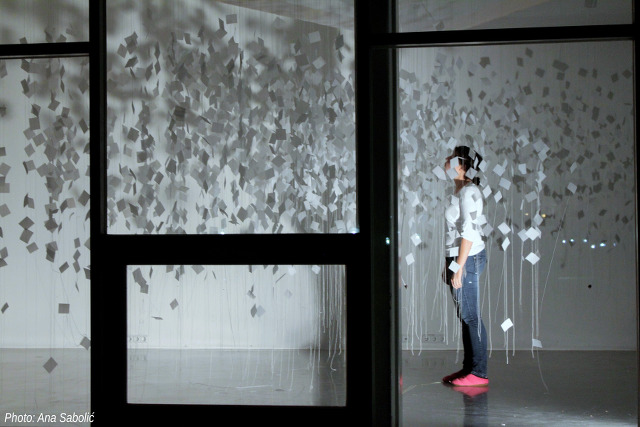
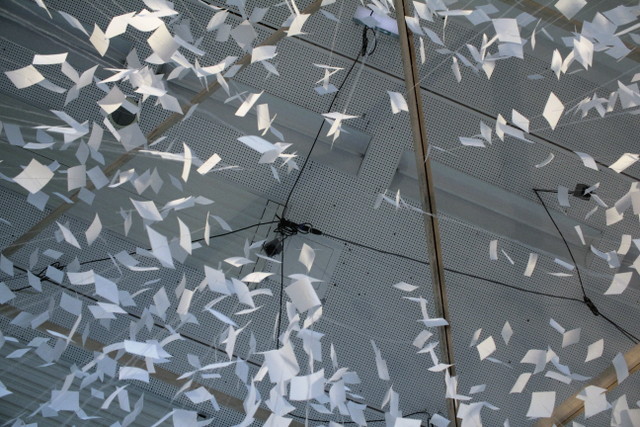
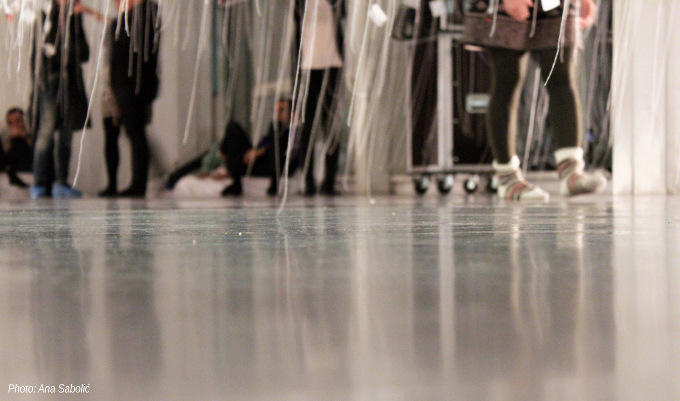
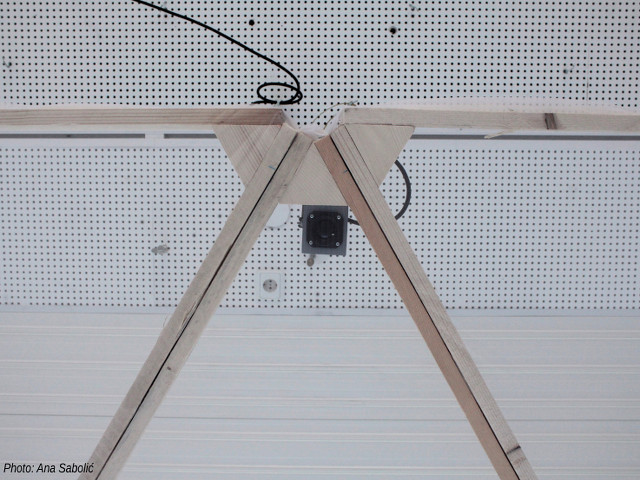
Barad’s entanglement similarly questions the subject/object division. In “Meeting the Universe Halfway”, she writes:
To be entangled is not simply to be intertwined with another, as in the joining of separate entities, but to lack an independent, self-contained existence.
Entanglement occurs in this work on many different layers. It touches upon major questions such as authorship, collaboration, identification, causation and complexity. The work cannot be traced back to the sum of individual contributions (the sound, the paper, the sensors), but really emerges as something new. It also asks us to give up the idea that an aesthetic experience can be planned and designed beyond “working hypotheses”. One of the sound layers uses recordings of falling leaves, a timbre I wanted to use as a reflection of the paper installation. The sounds are modulated in their density and using a formant, and due to technical limitations in treating each sound grain separate from the others, I was not fully convinced of this layer during the planning period. But in the exhibition space that layer suddenly made much more sense, and I did not mind the artificiality of the applied filtering any longer, it simply did not matter.
Entanglement also concerns the climate system. We are inside this system, every motion matters, but it is hard to foresee the exact consequences that actions have. As in our team production, the violent move of one individual can produce major disturbances. The visitors to the installation have to question their movements—how much do you want to get entangled with the threads? How careful are you? One of the most beautiful outcomes of the work was the ongoing transformation of the space, since the traces of the visitors are left visibly behind. The flow of air from an open window bends the threads, the flow of air from moving bodies lets the threads touch and connect each other, producing new forms and paths. The changing topology is not merely visual, but the spatial differentiation of sound dynamically modulates the perceived structure of the space.
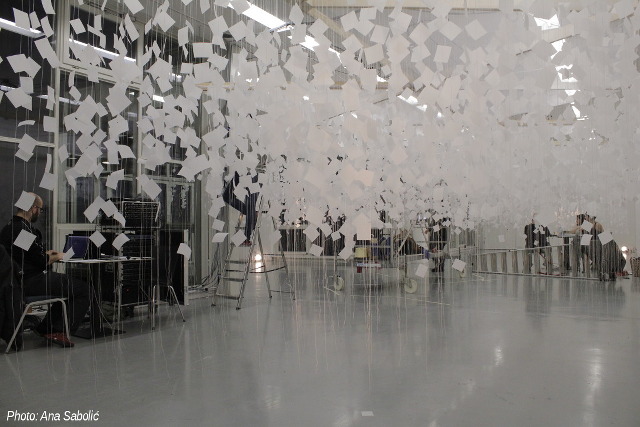
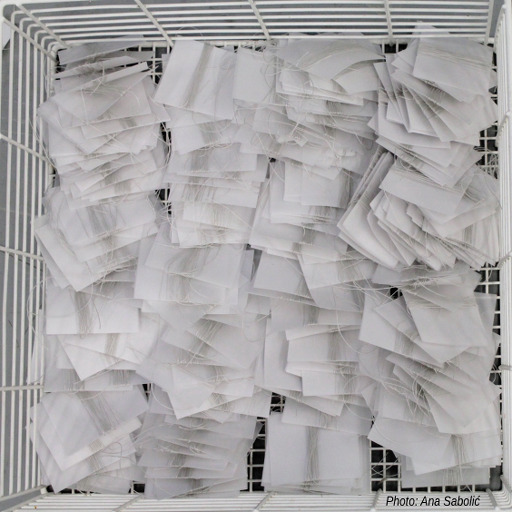
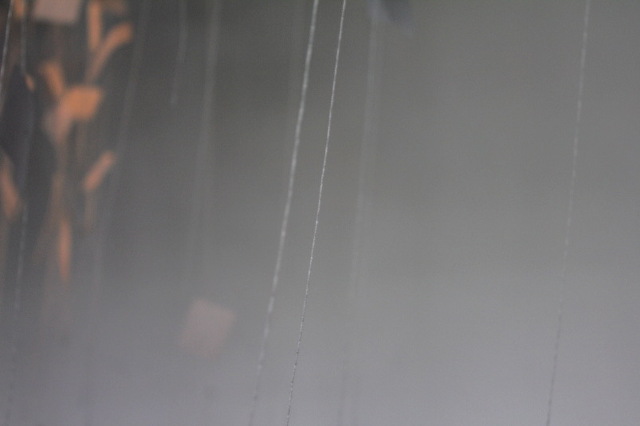
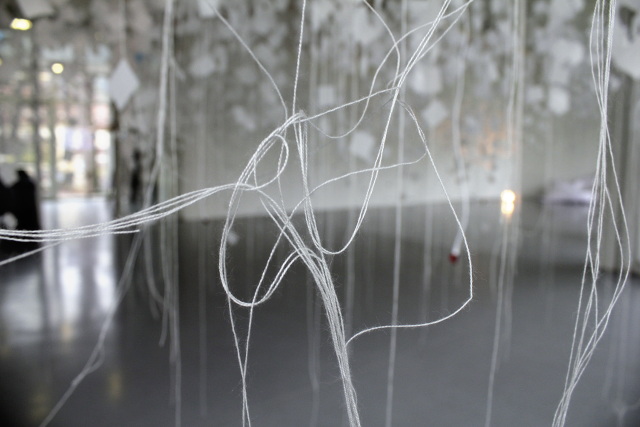
On the Sound Composition
Two types of motions may appear in the data: a superimposition of quasi-periodic motions at different speeds (most obvious is the annual cycle), as well as overall tendencies and asymmetries (such as the increase in average temperature over the past hundred years and into the projected future). These motions are interesting because of their non-identical repetition, their “allures” to use a Schaefferian term. To become perceptible, they must be projected at different frequencies and different spatial locations. Irregularities can be further exposed by calculating anomalies, the deviations from the expected values at a given time and location.
To address the tension between global abstract data space and the singularity of concrete space, I use transitions and cross-modulations between a purely data-driven sonification and the appearance of sounds gathered from a database of field recordings (*). Recordings that originate from sites close to locations corresponding to the mapped positions of the speakers in the installation room. Fuller’s Dymaxion further individualises the space by suggesting specific trajectories between the speakers, by introducing gradual rotations of the compass and by twin vertices that replicate specific coordinates within the room.
I define my compositional freedom and my “laboratory” in the space by an inertia, a sluggishness of the generative sound system that must not be mistaken for an obstacle but a support towards the visitor, providing just enough decoupling to lessen the expectation that explicit action is required for the machinery to work and that any action has inevitable consequences. The negative constraint of staying “faithful” to the data I countered also by relocating my freedom within the meta-structure: the way sounds emerge, how they can appear next to each other, how they are selected. And so it happens that the co-presence of two or three sets of conditions which, isolated, are characterised only by a limited number of manifestations (eight sound layers, seven types of transitions, 150 square metres across which to spread the sound), allows for exposure to ever new and surprising sound constellations.
Further Reading
- The essay “Particularities and Generalities. Considerations on the Sound Composition” was published in the exhibition’s brochure.
- The development process of the installation has been accompanied by a weblog.
(*) These recordings, published under Creative Commons licenses, were taken from the Freesound.org database using the following identifiers: 19550, 19992, 28264, 36430, 39895, 51904, 52647, 65495, 67031, 96175, 103115, 103189, 110921, 133832, 138997, 143115, 150865, 152656, 156562, 163607, 163608, 173095, 176028, 176385, 178648, 181364, 186860, 211063, 221859, 222037, 222640, 232411, 233194, 233702, 233704, 234888, 241956, 245826, 249504